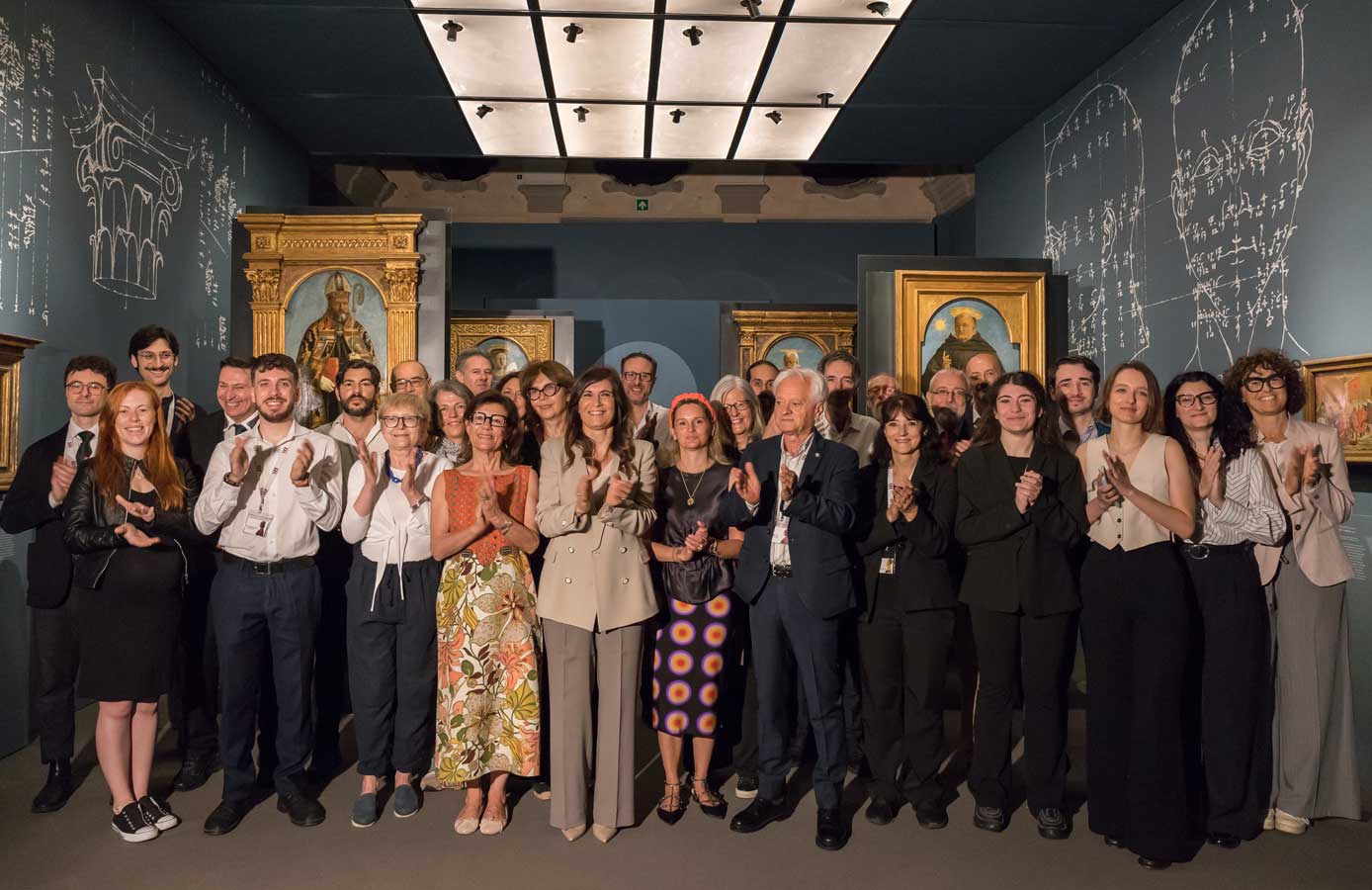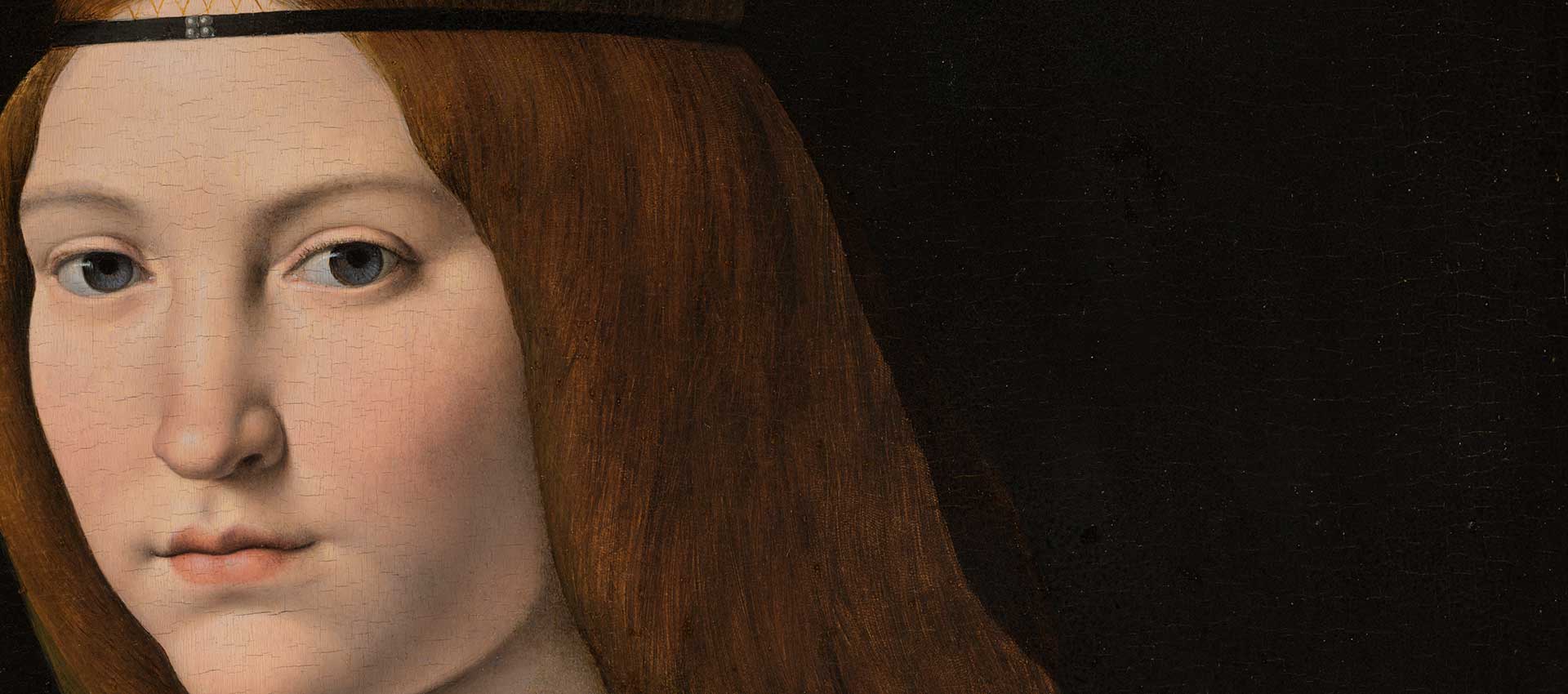50,110 times: thank you!
25 JUNE 2024
The exhibition Piero della Francesca: The Augustinian Polyptych Reunited, which with 50,110 visitors was the Poldi Pezzoli Museum’s most visited exhibition ever since it opened to the public.

In spite of the fact that admission is restricted to ensure the safety of the works and maximum enjoyment by visitors who can admire the polyptych panels full of extraordinary details at close quarters, the museum closed its three-month exhibition with an average of 600 visitors per day.
The reuniting of the eight panels of the polyptych, five centuries after their creation, was a unique and unrepeatable opportunity, especially for research purposes, because it triggered a series of in-depth studies that, thanks to diagnostic investigations, provided answers to questions and solved the mysteries that had shrouded this fascinating and grandiose altarpiece for centuries. In fact, it was possible to investigate some important aspects of the polyptych’s history, Piero della Francesca’s painting technique, the materials used, the woodwork and the scene that occupied the central panel, unfortunately never found and probably lost.
“We are very satisfied and proud of the excellent results of the exhibition both in terms of scientific research and the extraordinary number of visitors,” says architect Alessandra Quarto, Director of the Museum. “This ‘reunion’ is a milestone in the updating of studies on Piero della Francesca; never before have so many specific, non-invasive investigations been carried out in collaboration with the lending museums.
The strong point of the exhibition, with the Bracco Foundation as main partner, was certainly scientific research.
The reuniting of the eight panels of the polyptych, five centuries after their creation, was a unique and unrepeatable opportunity, especially for research purposes, because it triggered off a series of in-depth studies that, thanks to diagnostic investigations, provided answers to questions and solved the mysteries that had shrouded this fascinating and grandiose altarpiece for centuries. In fact, it was possible to investigate some important aspects of the polyptych’s history, Piero della Francesca’s painting technique, the materials used, the woodwork and the scene that occupied the central panel, unfortunately never found and probably lost.
“We are very happy to have contributed to the success of one of the most visited exhibitions of the Milanese cultural season and of the entire history of the Poldi Pezzoli Museum, of which we have been proud Corporate Partner for over ten years,” says Diana Bracco, President of the Bracco Foundation. “One of the characteristics of our commitment to cultural projects is the combination of art and science: as in the case of other major exhibitions, for this unrepeatable exhibition of international standing we wanted to create a scientific project based on high-resolution diagnostic imaging techniques, in which Bracco is a world leader.”
poldi pezzolI MUSEUM
Poldi Pezzoli Museum
Museo Poldi Pezzoli in the centre of Milan, close to the Duomo Cathedral and the Scala Theatre, the Poldi Pezzoli Museum welcomes you! Opened in 1881, it was the house of the noble Milanese Gian Giacomo Poldi Pezzoli (1822-1879). Avid art collector, he had gathered here paintings as well as sculptures, carpets, laces, arms and armour, jewellery, clocks, porcelain and glass.
EDUCATION
Workshops and Activities
The Museum has initiated educational activities since 1974 through guided tours, workshops, specific tours and publications designed for all kinds of audiences, from schools of all levels to adults.
VISIT
Tours
To make your visit even more engaging and rich in discovery, we have created a series of unique itineraries designed to satisfy different passions and interests.

EXHIBITIONS AND EVENTS
MARCH 26 — JUNE 30, 2025
The Seduction of Color
ANDREA SOLARIO
and the Renaissance between Italy and France
A unique exhibition to rediscover the genius of Andrea Solario, master of the Lombard Renaissance. The Poldi Pezzoli Museum hosts exceptional works from prestigious international collections, with the extraordinary collaboration of the Musée du Louvre.
